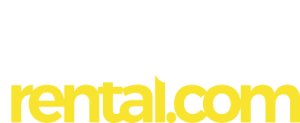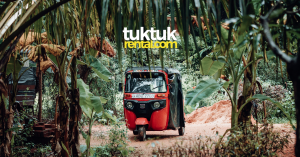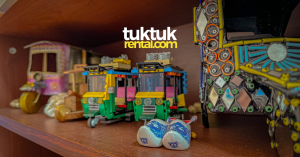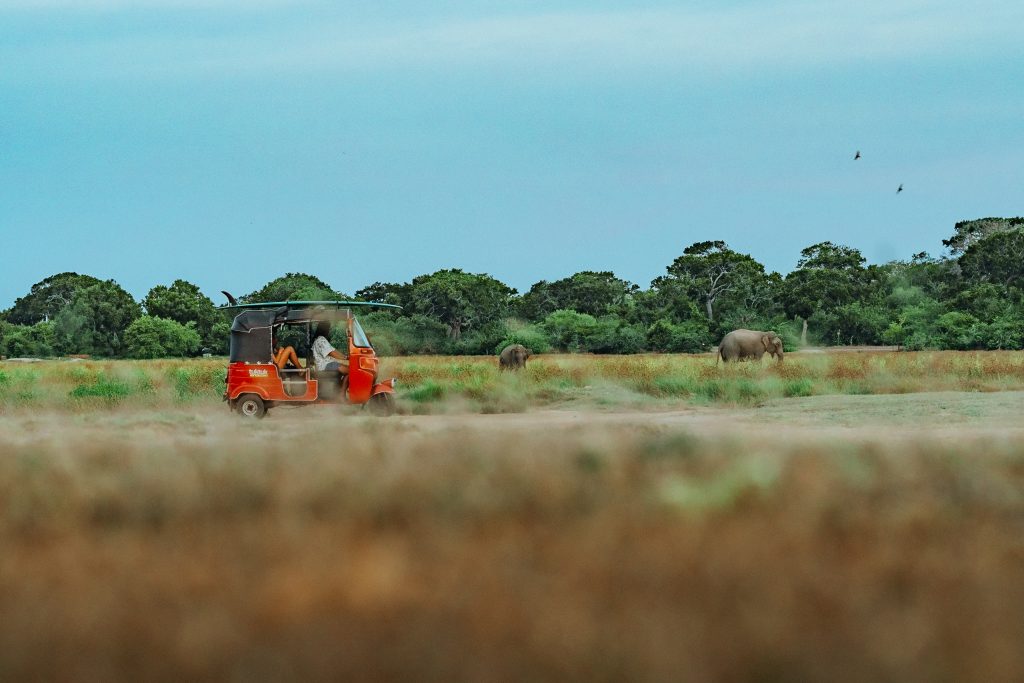
Wildlife Safaris in Sri Lanka – a chance to encounter the world’s rarest endemic species
It’s a warm, humid day that makes everyone thirsty every fifteen minutes. The distance between your comfy room and the refrigerator is too much to bear. In addition, there’s the danger of encountering a nosy relative or a clingy pet. Given the slightest chance, both will latch onto you and never leave.
Somehow, you gather enough courage to walk on your toes to the kitchen. While bending down for a chilled water bottle, you constantly check for possible intrusions. After you shut the fridge door, you realize a millisecond too late that the glass bottles will clink. As a result, you instantly leap back, stride straight into the thicket of your room, and lock yourself in until the next pang of thirst.
This is probably how deer feel while trying to drink from reservoirs in tropical forests. Fortunately, you can witness them, empathise with them, and have many other wildlife encounters in Sri Lanka’s national parks. Therefore, let us tell you why you should include a wildlife safari in your Sri Lanka travel itinerary.
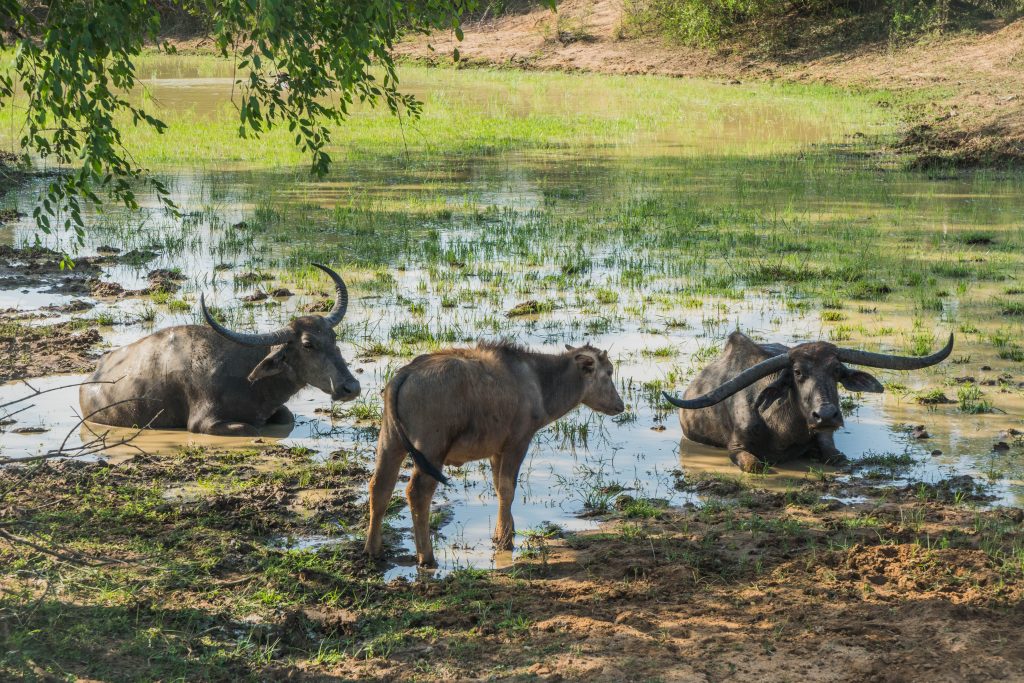
Reasons to go on a Wildlife Sri Lanka Safari
Psychologists describe ‘nature connectedness’ as an individual’s relationship with the natural world. In fact, many studies have shown that directly connecting with nature can improve psychological wellbeing. This includes being around plants, animals, and natural scenery. However, with our city lives and office jobs, most of us no longer have that connection.
Worry not, because Sri Lanka offers many ways to get back in touch with nature. Here are a few reasons you should go on a wildlife safari
Being in a Biodiversity Hotspot
Sri Lanka is one of only thirty-six biodiversity hotspots in the world. Specifically, this means it has at least 1,500 native plant species that don’t exist elsewhere. It also has a large variety of endemic animals, especially reptiles and amphibians. Consequently, exploring the forests and natural reserves will give you a chance to empathise with all sorts of spectacular species. Perhaps, it will even help you get rid of a fear of some animals too.
A Paradise for Birdwatching
If you’re a bird lover, Sri Lanka has you covered. For instance, there are thirty-four endemic bird species to spot, from the national bird—the Sri Lanka junglefowl—to the endangered Serendib scops-owl. Besides those, you can find over 400 other species, mostly across the country’s wet and hilly regions. Sri Lanka is also a hotspot for migratory birds like the ibis, heron, and pelican. You can read more at the Ceylon Bird Club, which started way back in 1943.
Supporting Conservation Efforts
While Sri Lanka has a rich biodiversity, it is also one of the top countries affected by the climate crisis. Therefore, conservation is always at the forefront of the country’s environmental mandate. You can be a part of it by volunteering at a recognised NGO, attending ecological workshops, or making verified donations. These efforts help both the natural world and the local grassroots community. For example, two key organizations are Dilmah Conservation and the Wildlife and Nature Protection Society of Sri Lanka.
National Parks in Sri Lanka
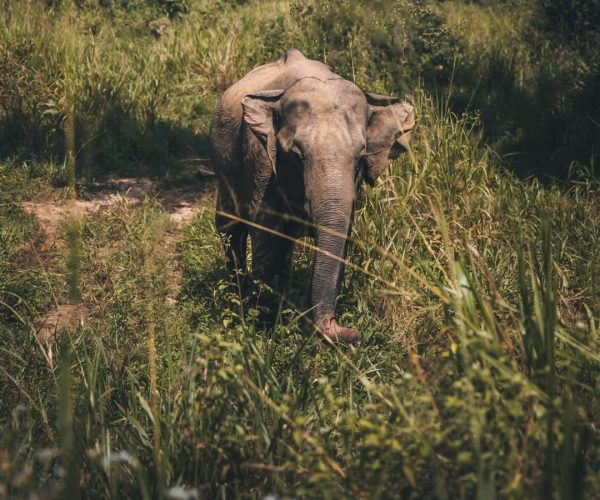
Here’s a list of all twenty-six national parks in Sri Lanka, grouped by province:
Northern Province
Adam’s Bridge (Mannar)
Chundikulam (Kilinochchi, Jaffna)
Delft (Jaffna)
Madhu Road (Mannar)
North-Central Province
Angammedilla (Polonnaruwa)
Flood Plains (Polonnaruwa)
Horowpathana (Trincomalee, Anuradhapura)
Kaudulla (Habarana)
Minneriya (Minneriya, Habarana)
Somawathiya (Polonnaruwa)
Wasgamuwa (Matale, Dambulla)
Wilpattu (Anuradhapura)
Southern Province
Bundala (Hambantota)
Hikkaduwa (Hikkaduwa)
Lunugamvehera (Hambantota)
Ussangoda (Hambantota)
Yala (Hambantota)
Central Province
Galway’s Land (Nuwara Eliya)
Horton Plains (Nuwara Eliya)
Eastern & Uva Provinces
Gal Oya (Ampara)
Kumana (Hambantota)
Lahugala Kitulana (Pottuvil)
Maduru Oya (Polonnaruwa)
Pigeon Island (Nilaveli, Trincomalee)
Western & Sabaragamuwa Provinces
Horagolla (Nittambuwa)
Udawalawe (Embilipitiya)
Animals You May Spot in Sri Lanka National Parks
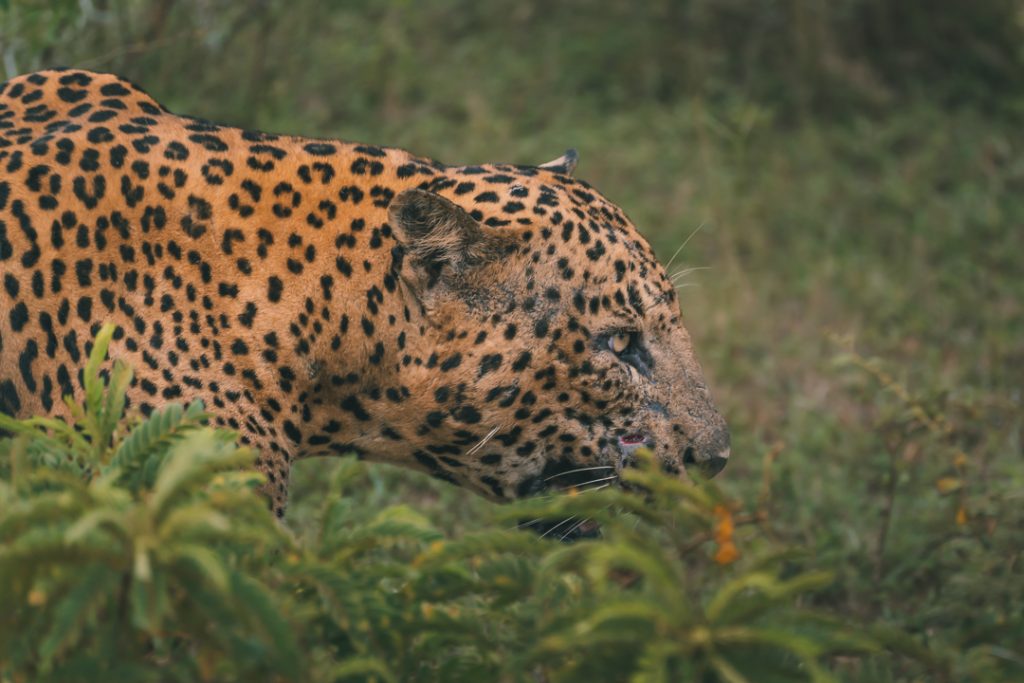
Animals You May Spot in Sri Lanka’s National Parks
If you’re looking to spot a specific popular animal, these are the best corresponding national parks for them:
Leopard: Yala, Wilpattu, Kumana
Elephants: Gal Oya, Udawalawe, Minneriya, Wasgamuwa
Sloth Bears: Wilpattu, Yala, Wasgamuwa
Birdwatching: Bundala, Kalametiya, Chundikulam, Horton Plains
In addition, Horton Plains is one of the best places for hiking in Sri Lanka. A path across it is part of the 300-kilometer Pekoe Trails, named one of TIME magazine’s greatest places in the world.
Apart from the animals mentioned above, Sri Lanka is home to several other endemic species. Here are a few more:
The Slender Loris
Purple-Faced Langur
Pangolin
Fishing Cat
Sri Lankan Junglefowl
The Sri Lanka Blue Magpie
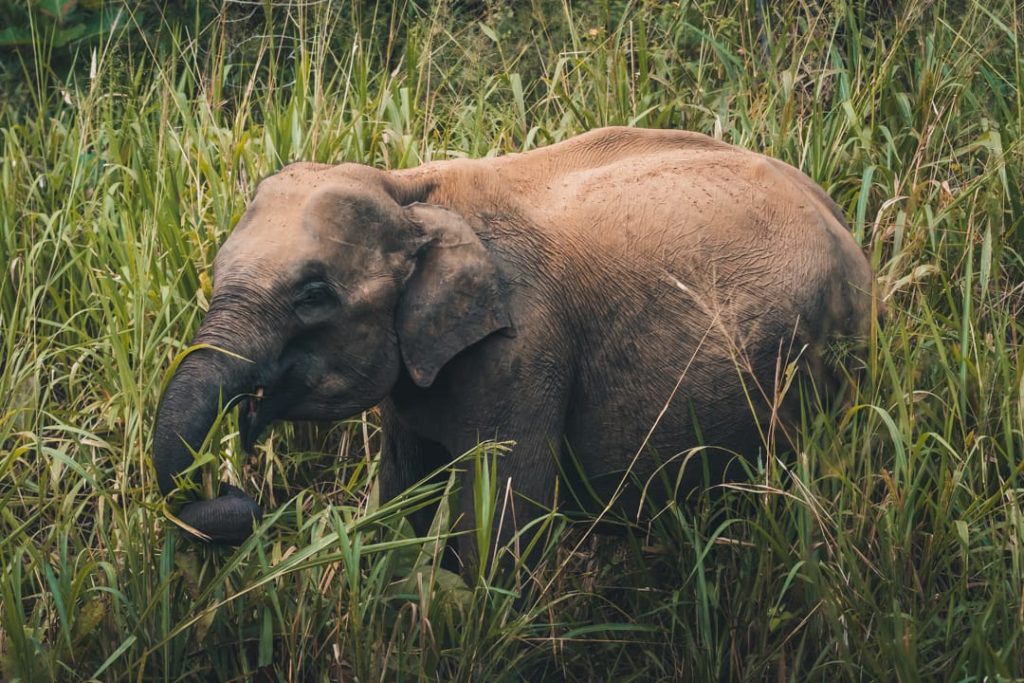
Best Time to Go on a Wildlife Safari in Sri Lanka
Anytime is a good time! Depending on when you travel, you can visit a national park near your location. However, the country does go through two monsoons, which can affect animal patterns. Therefore, it’s best to plan your itinerary based on the season and the animals you wish to see.
Here’s a brief seasonal breakdown and the best parks to visit during each period:
December to February: Yala, Udawalawe
March to May: Wilpattu, Gal Oya
June to August: Kumana, Pigeon Island
September to November: Minneriya, Delft Island, Bundala

Accommodation Options
There are a variety of accommodation options to choose from, including tents, lodges, and hotels. Ultimately, your choice depends on your budget and the kind of wildlife experience you want. While most camps are located at the edges of the national parks, hotels are usually a bit further away.
For a more immersive stay, you might choose a camp. On the other hand, for a slightly more reserved visit, a hotel can serve as a great base. Within the camps, you can choose between functional ones offering bare necessities and more luxurious ones with comfortable bedding and private bathrooms. You can also stay at a Wildlife Circuit Bungalow in any of 13 approved national parks.
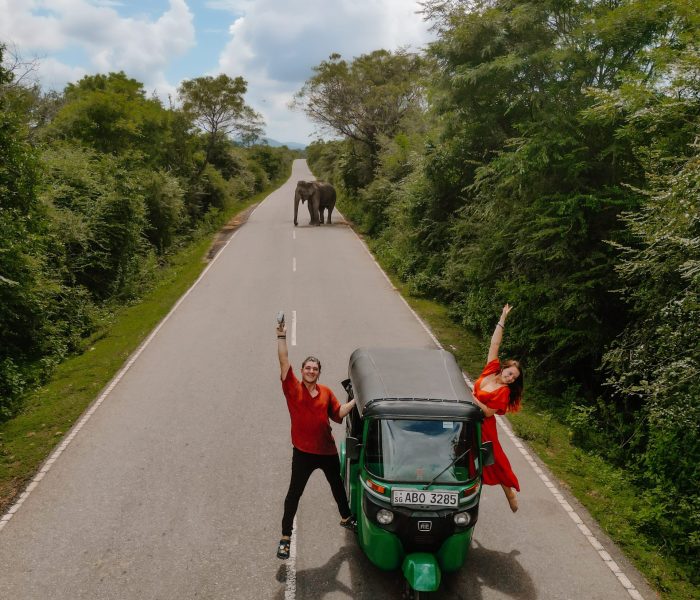
Adding Wildlife Safaris to your Itinerary
While most safaris in Sri Lanka are on a jeep, there are also walking and boat-based safaris to explore. Additionally, there are night safaris to spot nocturnal animals. Regardless of the type, you’ll always have an experienced guide who knows the area and its wildlife.
For instance, if jeep safaris aren’t for you, Gal Oya National Park offers boat safaris. Here, you have the opportunity to spot swimming elephants, water buffaloes, and hundreds of bird species.
In conclusion, adding a wildlife safari is bound to enrich your travel plans. Whether you’re a seasoned ecologist or a family looking to make lasting memories, connecting with the natural world will make your trip even more worthwhile. If you’re still confused about which national park to choose, hop on a free call with us and let us help you plan your perfect itinerary.
